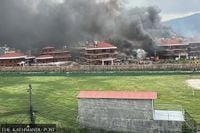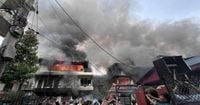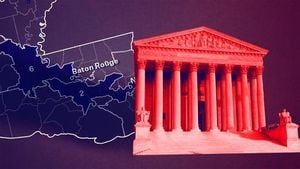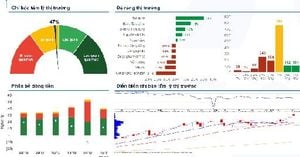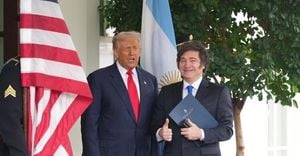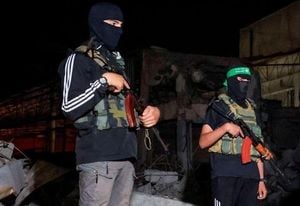On October 16, 2025, Kathmandu finds itself still reeling from the aftershocks of a youth-led uprising that toppled Nepal’s elected government just a month prior. The Gen Z movement, spearheaded by young people between the ages of 12 and 28, has left the country’s politics, economy, and society in a state of flux, with scars visible from the capital to the farthest reaches of the countryside. As the interim administration struggles to restore order and chart a course toward early elections, the nation faces urgent questions: Can Nepal recover from the devastation? Will the next generation find the stability and opportunity they demand?
The September uprising erupted in response to rampant corruption and persistent governmental dysfunction, according to reporting by The Kathmandu Post. Protesters took to the streets in unprecedented numbers, setting fire to government offices, politicians’ homes, and businesses. Within just 24 hours, the movement succeeded in toppling the sitting government, forcing the installation of an interim administration with a mandate to hold general elections on March 5, 2026—two years ahead of schedule.
But the cost of this rapid political change has been staggering. More than 70 people lost their lives in the violence, and property damage has run into the billions. The interim government, led by Prime Minister Sushila Karki, faces the daunting task of restoring basic services and preparing the country for a crucial election. According to Nepali Times, the path to those elections has only become bumpier, with Gen Z protesters themselves growing increasingly divided and calls mounting for the major parties to hand real power to younger leaders.
Nowhere are the effects of the uprising more visible than in Kathmandu’s government quarters. During the protests on September 9, the homes of prominent officials—including Nepal Rastra Bank Governor Biswo Nath Poudel and his family in Bhainsepati and Chitwan—were set ablaze. The central bank scrambled to find a new residence for Poudel, issuing a public notice on September 28 seeking rental proposals, but received no suitable offers by the October 13 deadline, forcing an extension. The destruction was so widespread that even the ministerial quarters at Bhainsepati and the Prime Minister’s official residence at Baluwatar sustained damage, though Karki continues to reside at the latter.
Ministers in the interim government have been forced to improvise. Mahabir Pun, Minister for Education, Science, and Environment, now lives within the ministry’s own premises at Keshar Mahal by choice. Other ministers have retreated to private homes. The government’s inability to provide official residences for its top officials has sparked concern, especially given the security risks. Umesh Kumar Chaudhary, spokesperson for the Federal Secretariat Construction and Management Office, explained, “Currently, we are only at the preliminary assessment stage for the damaged buildings, so it is not possible to say how long the repairs will take.” Until then, senior officials who lack homes in Kathmandu receive a monthly rent allowance of Rs40,000 (about Rs35,000 after tax), a stopgap that few see as sustainable.
This housing crisis extends even to the highest ranks of the National Assembly. Vice Chairperson Bimala Ghimire, who lost her government accommodation to arson, now resides at her permanent home in Kapilvastu. She voiced frustration at the lack of official concern: “It might be because of the ongoing difficult circumstances, no government agency has contacted me showing any concern regarding this matter.” National Assembly Chair Narayan Dahal raised her case directly with Prime Minister Karki, suggesting that an unused government building be allocated for her. Yet, as Ishwar Kharel of the Rental Entrepreneurs Association pointed out, landlords have become wary of renting to political figures, fearing both security risks and public backlash. “Landlords have become more circumspect when it comes to renting their house to political leaders,” Kharel said.
The unrest has also left deep psychological scars across generations. In a reflective piece for OnlineKhabar, a Nepali writer described the generational divide: older Nepalis recall their own battles against monarchy and for democracy, while Gen Z’s fight has been waged in the digital age, with different expectations and tools. The author notes, “Our movement sought systemic change and achieved it with relatively little destruction. Yours has sought situational change, but at a staggering cost: billions in property damage, deep social scars, and heavy human casualties.” The article paints a picture of a nation where each generation’s struggle leaves its own mark, but warns that “yours is the rebellion that has turned the nation to ashes in search of something new.” Whether those ashes give rise to a stronger Nepal remains an open question.
Economic consequences have been swift and severe, especially for Nepal’s vital tourism sector. The autumn months, typically the busiest for trekking and travel, have seen hotel occupancy plummet. Thamel, once bustling with visitors, is now subdued. “Thamel used to bustle in autumn with almost 100 percent occupancy for small and medium-sized hotels,” said Mandip Giri, managing director of Dom Himalaya Hotel, to The Kathmandu Post. “Now, some days we get 30 percent occupancy in our 37-room hotel, some days 40 percent, and if we’re lucky, 50 percent.”
Chitwan’s Sauraha, a hotspot for jungle safaris, has fared little better. Suman Ghimire, executive director of Jungle Safari Lodge, described the struggle: “With business sharply declining from early September to early October, we’re finally seeing signs of revival because tourists have started coming back. Right now, it’s just about survival. There’s no profit.”
According to the World Bank, the Gen Z uprising will limit Nepal’s economic growth to just 2.1 percent for the fiscal year ending in mid-July 2026. In September alone, tourist arrivals fell by 18 percent, and while some recovery is evident, the industry faces an uphill battle. The Nepal Tourism Board has relaunched digital campaigns and livestreams to reassure potential visitors, and Prime Minister Karki has directed ambassadors to promote Nepal as safe and welcoming. “The tourism sector has suffered a significant hit following the Gen Z movement,” Karki acknowledged. “You must inform all parties that the situation has normalised and that tourism, trade, and investment have resumed as before. It’s also important to highlight that foreign tourists were never targeted during the protests—in fact, many were helped.”
Yet, convincing the world remains a challenge. Travel advisories and alarming headlines about jailbreakers and missing police weapons have kept high-spending tourists away. Binayak Shah, president of Hotel Association Nepal, observed, “Most cancellations have come from India, Nepal’s top source market. Agencies sending such travellers are in a ‘wait and see’ mode because of the travel advisories issued by several countries.”
As Nepal lurches toward the March 2026 elections, the stakes could hardly be higher. The country’s fragile democracy, battered economy, and generational rifts all hang in the balance. Whether the ashes of the Gen Z uprising will yield a stronger, fairer Nepal—or simply more turmoil—is a question that only time, and the choices of its people, can answer.
